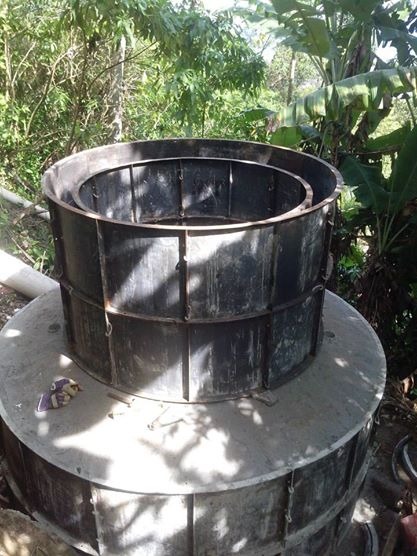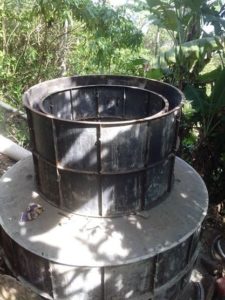
The Puxin system at Vale Encatado Favelo in Rio ready to receive concrete for the neck/gasholder
August 6, 2014
When the pours were finished in Niteroi, T.H., Jorma and the local team from Niteroi took the molds by pick-up truck to the rainforest Favela, “Vale Encantado”. They worked with Theresa Williamson and Catalytic Communities, an NGO that specializes in community development and empowerment. Catalytic Communities was one of the inspirations and catalysts for Solar C3CITIES (Connecting Community Catalysts Integrating Technologies for Industrial Ecology Solutions). Vale Encantado community leader Ottavio Alves Barros came to a workshop in Niteroi on Puxin assembly that Cuhane, Teller, and Vasconcellos gave during the build there. Inspired by the workshop, Alvez Barros finished a food waste digester for their communal kitchen in July of 2014 with the assistance of Marcello Ambrosio, Luis Vasconcellos, Tito Cals and Leo Adler.
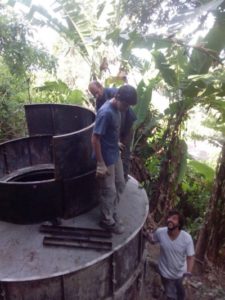
Marcello, Leo and Tito assemble the Puxin neck molds to finish the build
This is a great example of the Solar CITIES development model in action. Each build in a community acts as a training opportunity for members from other communities to gain the expertise to do it themselves. Once a build is finished in one place, the biogas molds can be transported to the next community where another build can take place, training members of another community. The molds can then be passed to another community. The Puxin molds become like a traveling circus. The circus moves on but new performers join in each new location. It is basically the same show with new players. And similar to a wave, the water is localized but the movement is ever forward. In this spirit, Solar CITIES sets the wave in motion by joining receptive communities and building a small scale biogas system out of local materials.
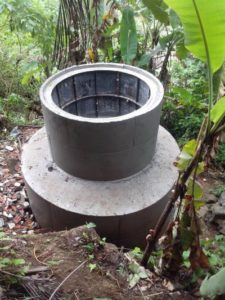
In the summer of 2013, Culhane and Vasconcellos, joined by Insinkerator’s Julio Porta, built a 500-liter biogas system in Niteroi at the old creche (day care center) out of the typical Brazilian tapered open water tank just to show that it could be done.
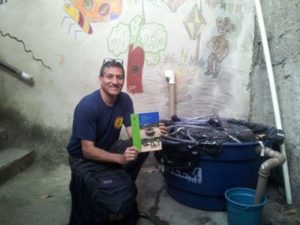
An ARTI style digester built out of a typical tapered 500 liter Brazilian water barrel, just to show it could be done.
During Culhane’s next visit, he and Vasconcellos built an experimental 500-liter system out of a typical sealed water tank with the members of Alemao Verdejar.
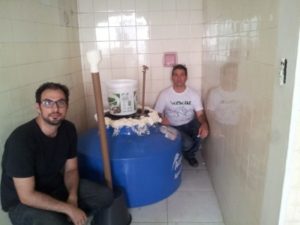
Luis and T.H. experimenting with a new design for using off-the-shelf water tanks as biodigesters in the Alemao Verdejar Favela
These basic training opportunities in small scale biogas build confidence and familiarity with biogas before launching into a larger community size build.
Read more about our Vale Encantado work in English here and here and in Portugese here in articles by our Brazilian NGO partner Catalytic Communities.

